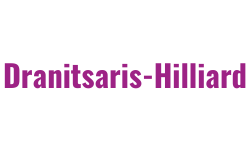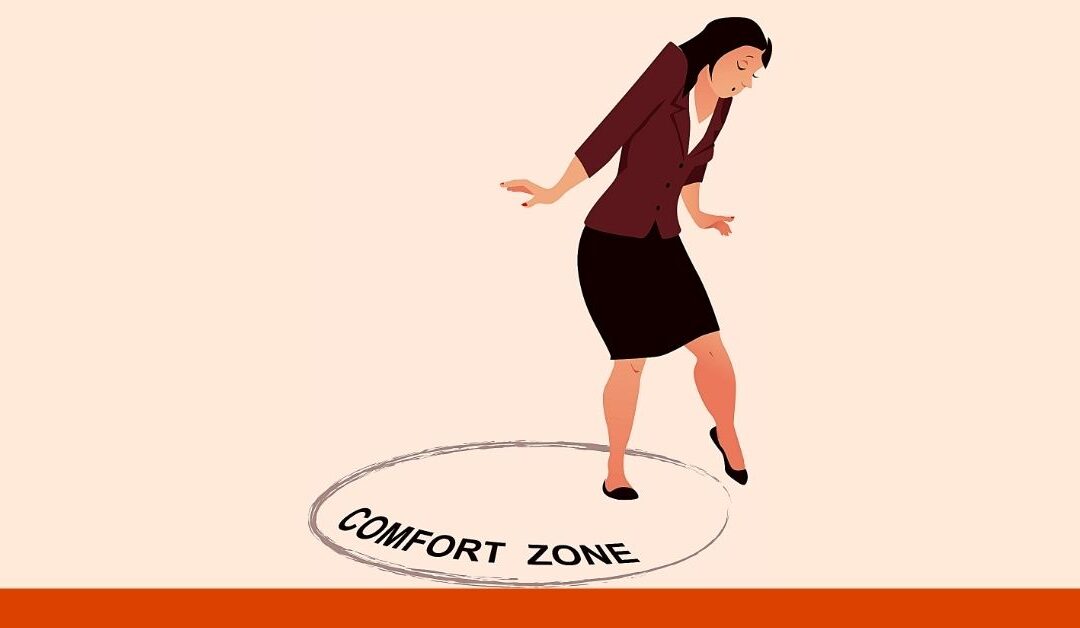“You’ve probably heard about the Peter Principle. You know, the tendency in most organizational hierarchies for every employee to rise in the hierarchy until they reach a level of respective incompetence. This includes leaders who often ride the wave of the success of their business without doing any real development, until they reach a place where they can take the business no further without admitting they don’t know how to seek help and step out of their comfort zone. Determined to maintain the notion they know what they are doing and the image of themselves as a great leader, they hunker down, preserve the status quo, and create organizational stagnation.”
It’s not uncommon for leaders to get stuck in their comfort zone, stopping growth and innovation in their organization. While they present an image of being growth oriented and promote the notion that the organization is all about innovation, their behavior maintains the status quo. While these leaders will point to things like brainstorming, holding offsites, lengthy meetings with everyone involved, vision and strategic planning, what follows are no decisions or actions coming out of meetings and plans are shelved. They instead focus their energy into preserving the status quo, with the fixed belief that they are successful and will continue to be successful by doing what they have always done. This blind spot prevents them from seeing that the market is changing, and the competition is passing them by. They are always busy but are more like a stationary bike where you do a whole lot of peddling without going anywhere than a car racing down an open highway toward a desired destination. They have become complacent.
During the normal stages of organizational growth, leaders get moved up into senior leadership roles because of longevity, functional competence, and likeability. There’s a wonderful feeling that comes from being successful and arriving in a secure market niche. But the comfort zone that is meant to be a resting place before the next stage of growth becomes so comfortable, that leaders become complacent and don’t want to move. The avoidance of facing challenges and taking risks again, along with leaders needing to look at their own lack of ability to lead at the next level causes them to play it safe and seek predictability over uncertainty.
The problem with an organization and its leaders making a rest stop their home base is that the external market and environment keeps changing. Next thing you know, an organization that has achieved first place in their market is being passed by the competition. (Examples IBM, Yahoo, Netscape, Atari, to name a few.) Experience and history show that any business that does not systematically plan for growth and continuous improvement will plateau, stagnate, and then decline. Businesses that secure their level, and plan for growth and continuous improvement resist the allure of the status quo, face their fears, and get the help they need and continue to thrive.
Why don’t leaders see the role they play in stopping growth?
Self deception plays a significant part in the failure of an organization to continue growing. When leaders don’t look to themselves to see how their behavior is impeding growth, they will look for external evidence to confirm the issue has nothing to do with them. It’s easier to believe that they are helpless to do anything about the external forces than admit they are afraid to step out of their comfort zone. When they decide external factors are responsible for the decline in growth or market share, they give themselves a reason not to try and the rationalization works. Not realizing it’s their self-protective system that is protecting their self-image or ego, keeping intact their image of being a progressive, innovative leader, regardless of how detrimental it is to the success of the business. Leaders can then abdicate responsibility to get back to the business of growth and continuous improvement, including their own. The thinking is, if I can’t do anything about those factors, I can’t really be responsible.
What makes the argument seem so reasonable is that it’s true. External factors are beyond our control. But when you break it down, most of the reasons leaders use to maintain the status quo don’t stand up to scrutiny. So, whether the reason is the economy, lack of talent, competitors, clients, or a favorite — lack of time, it is more of an excuse than the real issue. We’ve heard leaders suggest that it is impossible to hire good senior people to be leaders and managers and that existing employees just don’t have what it takes so they can’t possible change anything. Another popular group to scapegoat is the Millennials or Generation Z. Rarely do they look to themselves, to their leadership and recognize that what made them successful previously, no longer works at this stage of growth of the business.
Fear stops growth…
Fear is one of the biggest contributors to organizational stagnation, lack of innovation, and growth. The fear of stepping out of their comfort zone to go through the rigors of a growth spurt creates resistance. These leaders have survived growing pains and don’t want to face uncertainty once again as it creates anxiety, and in some cases, can be overwhelming. Change and growth are destabilizing and will frustrate both the need to be in control and the need to be secure. And when these needs dominate in the leadership team, it becomes a barrier to the path to continued growth, development, and innovation. Even when the organization just needs an overhaul or a renovation leaders can become defensive, insisting that everything is great, until they start losing people and market share.
Many leaders caught up in the security of their comfort zone don’t see that while they should be leading the organization out of it, they are doing the reverse. They like the hierarchy they’ve created with themselves at the top and they hold on to it as though it’s a security blanket. They don’t see how the hierarchy that was meant to support growth in their organization is strangling growth.
A sign of resistance to growth is excessive adherence to organizational systems and hierarchies. When an organization creates hierarchies, it’s in part so employees have a runway for their careers. With no growth plan, employees become demotivated because they don’t see a place for them to achieve career goals. The systems and hierarchy can also get in the way of adaptation and agility, especially in a changing or growth market. Organizations that become risk averse because of fixed ideas, and an attachment to the idea that because of their position in the marketplace run the risk of stagnation. Growth oriented employees leave and the ones that stay seem to operate on automatic pilot, sluggishly going through the motions of work, espousing alignment to growth and innovation without actually walking the talk.
Leaders need to get out of the way….
We often have to deal with a leader’s natural resistance to seeing their part in the lack of growth in their organization. Once we help them through the resistance and show them what they do have the ability to control and influence by following a roadmap we create for them, they will cautiously and optimistically get on board. Others can choose to hold on to their belief they are powerless to change and stay at the mercy of declining business and poor employee retention. Leaders need to see how they contribute to organizational inertia, become aware of their own resistance and move out of their comfort zone with a clear plan for achieving further growth and success.
What to do…
If you truly want to grow your business, you must step out of your comfort zone and challenge the fixed beliefs and mindset that is causing your organization to stagnate. Stop blaming your employees and the external environment and look at the reason why you aren’t leading for growth. As a leader, you must be willing to step outside the safety of your comfort zone and take responsibility for the impact of your fear and resistance on the organization and its issues. It is becoming aware of unconscious patterns and emotions that drive behavior that opens the door to an expanded perspective and new possibilities. The fear-based pattern that causes you to focus on only maintaining the status quo and “playing it safe” is at the expense of your own growth and the growth of your people and organization.
For more information about how you can develop as a leader through individual coaching or participating in a leadership coaching program, contact us at adranitsaris@caliberleadership.com.
___________________________________________________________________________________________________
Anne and Heather are organizational and leadership development experts at Caliber Leadership Systems, a boutique consulting firm specializing in dismantling of dysfunction in organizations. They are dedicated to empowering individuals, leaders, and organizations to achieve their potential by leveraging their expertise in the neurobiology of human development combined with system thinking approach. They wear many hats – Consultants, Executive Coaches, Trainers, Speakers and Authors – adapting their expertise and solutions to meet the needs of their clients. They bring a unique depth and breadth of knowledge and experience that gives clients the benefit of all of our disciplines to help them achieve their goals.
As experts in human development and behavioral change, leadership and organizational transformation, interpersonal dynamics and the achievement of potential, Anne and Heather have worked with thousands of leaders and individuals from around the world, been featured in dozens of publications, spoken at professional conferences, and written several series of books on personality type and the brain based on the Striving Styles® and Myers-Briggs Type Indicator®.
Follow us on LinkedIn to watch our workshops live!
Also, you can watch anytime on our YouTube Channel: Dranitsaris-Hilliard!


Recent Comments